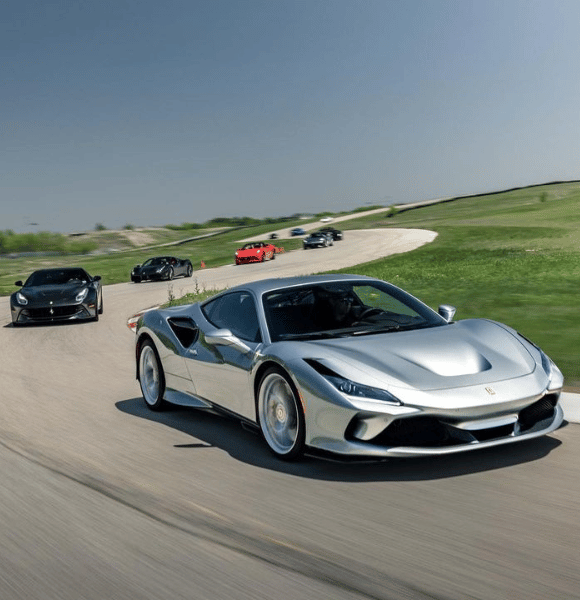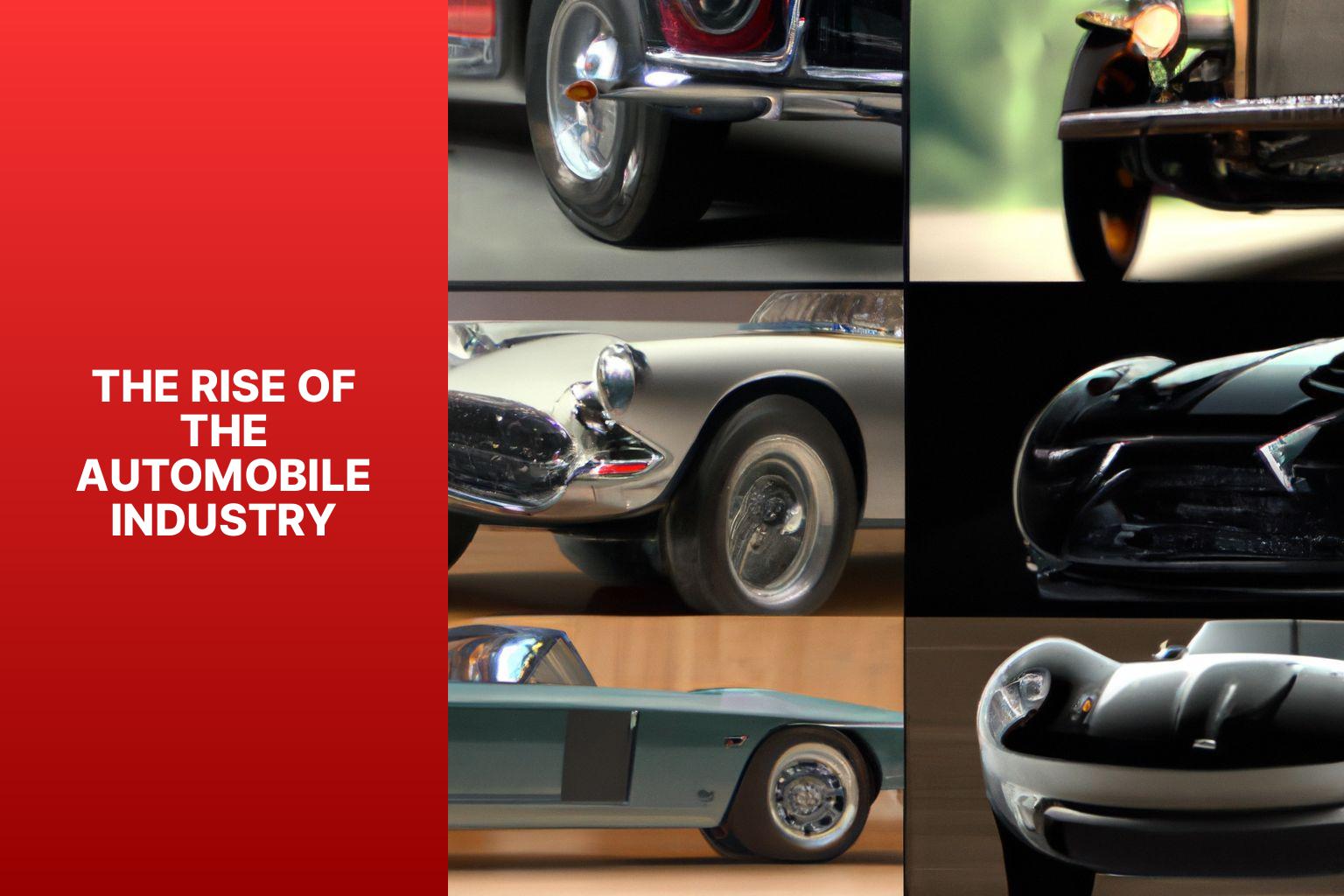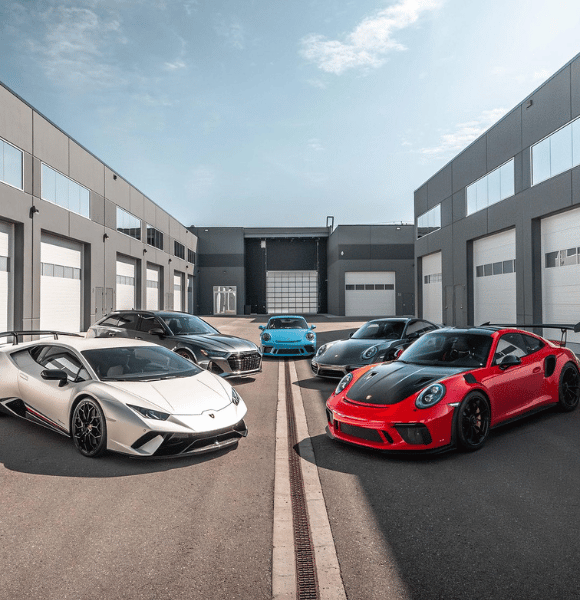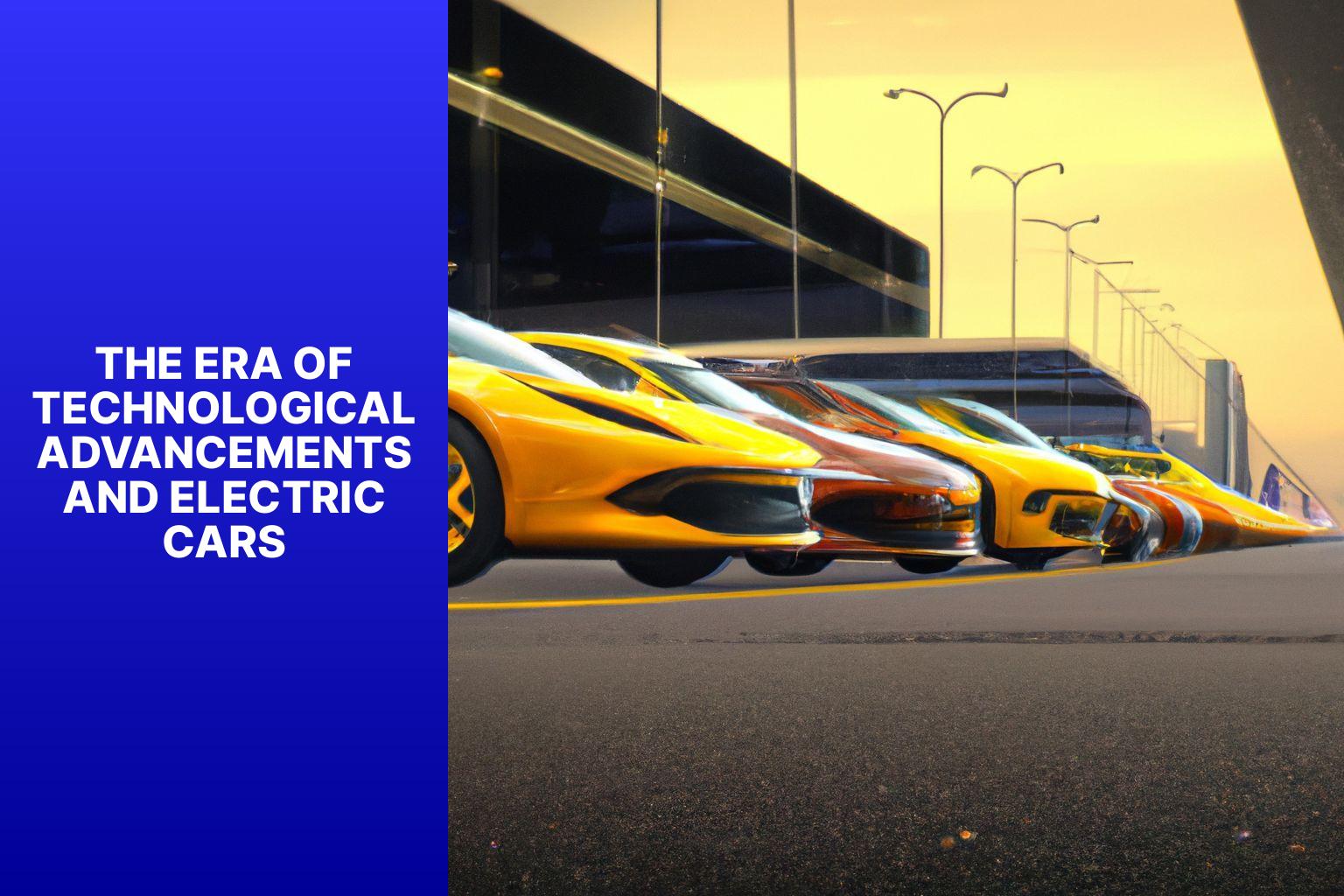Journey Through Time: How Men’s Car Preferences Have Evolved
Throughout history, men’s car preferences have undergone a significant evolution, mirroring the advancements in technology, societal changes, and shifts in cultural attitudes. From humble beginnings with horse-drawn carriages and steam-powered vehicles to the rise of the automobile industry and the golden age of muscle cars and sports cars, the preferences of men have continually transformed.
During the early era of automobiles, men’s car preferences were shaped by the inception of automobiles and the limited options available. Horse-drawn carriages were gradually replaced by steam-powered vehicles, which eventually paved the way for gasoline-powered automobiles. Men at this time were fascinated by the novelty of these new machines and focused more on functionality rather than aesthetics.
As the automobile industry grew, mass production techniques like Henry Ford’s assembly line revolutionized car manufacturing, leading to the emergence of the iconic Ford Model T. Men’s car preferences in the early 20th century were influenced by the affordability and accessibility of these mass-produced vehicles. Practicality and reliability became important factors.

The mid-20th century saw the rise of muscle cars and sports cars, appealing to men’s desire for power, performance, speed, and style. Muscle cars became synonymous with American culture, emphasizing horsepower and acceleration. Sports cars, on the other hand, were sleek and agile, embodying a sense of luxury and adventure. Men in this era gravitated towards these high-performance vehicles as symbols of status and masculinity.
The late 20th century brought about a shift in priorities due to the oil crisis and growing environmental concerns. Fuel efficiency and environmental consciousness became driving forces in the automotive industry. Men’s car preferences focused more on economical and eco-friendly options, leading to the popularity of compact cars and hybrid models.
In the 21st century, technological advancements have revolutionized the automotive industry once again. Electric and hybrid cars have become more prevalent as sustainability and energy conservation take center stage. Men’s car preferences in the 21st century are driven by a combination of factors, including technological features, environmental impact, and personal values.
The evolution of men’s car preferences mirrors the broader societal changes and advancements over time. From functionality and affordability to power and style, and now to sustainability and innovation, men’s choices in cars reflect the ever-changing landscape of the automotive industry and the shifting values of our society as a whole.
Key Takeaways:
- The Early Era: Men’s car preferences in the early era were influenced by horse-drawn carriages and steam-powered vehicles.
- The Rise of the Automobile Industry: Mass production and the introduction of the Ford Model T revolutionized men’s car preferences in the early 20th century.
- The Golden Age of Muscle Cars and Sports Cars: Men’s car preferences in the mid-20th century shifted towards power, performance, speed, and style.
- The Shift towards Fuel Efficiency and Environmental Consciousness: The oil crisis and changing priorities led to a shift in men’s car preferences in the late 20th century, focusing on fuel efficiency and environmental impact.
- The Era of Technological Advancements and Electric Cars: The emergence of electric and hybrid cars in the 21st century has influenced men’s car preferences, making them more conscious about technology and sustainability.
The Early Era: Horse-Drawn Carriages and Steam-Powered Vehicles
The Early Era of transportation takes us back to a time when horse-drawn carriages and steam-powered vehicles ruled the roads. In this exciting section, we’ll uncover the fascinating inception of automobiles and dive into men’s car preferences during this era. Let’s embark on a historical journey, exploring the beginnings of transportation and how it shaped the early choices of men when it came to their four-wheeled companions. Get ready to step into the past and discover a whole new world of horse-powered and steam-powered marvels!
The Inception of Automobiles
The inception of automobiles marked a significant milestone in transportation history. In the late 19th century, horse-drawn carriages and steam-powered vehicles laid the foundation for the modern automobile industry.
During this era, men were fascinated by the idea of personal transportation. These early automobiles were seen as a symbol of status and luxury, reserved for the wealthy. As technology improved efficiency and affordability, the popularity of automobiles grew.
Men in this era preferred powerful, fast, and stylish vehicles. They wanted a thrilling driving experience and to make a statement. The invention of the internal combustion engine played a crucial role in automobile development, providing increased power and performance.
As men embraced the convenience and freedom of automobiles, their preferences shifted towards practicality. The inception of automobiles revolutionized transportation, leading to the rise of the automobile industry and shaping the future of transportation.
Men’s Car Preferences in the Early Era

Photo Credits @thecarcreative
Men in the early era had specific preferences when it came to cars. They were interested in vehicles that symbolized both their status and their love for luxury, effectively showcasing their wealth and success. Cars were seen as a representation of masculinity and power, which naturally drew men towards vehicles that embodied these qualities.
For one, men had a liking for expensive and high-end cars. They had a desire for vehicles that were meticulously crafted with great attention to detail, boasting luxurious interiors and sleek designs. Brands such as Rolls-Royce and Cadillac were particularly popular among wealthy and influential men who wanted to make a statement.
Men were attracted to cars that offered exceptional speed and performance. The adrenaline rush that came with driving fast was something they truly enjoyed. Therefore, they actively sought out cars with powerful engines and impressive acceleration. Brands like Bugatti and Bentley were renowned for their speed and performance capabilities, and they became highly sought after by men who craved thrill on the road.
In addition, men wanted their cars to be unique and stand out from the rest. They placed great importance on customization options that allowed them to personalize their vehicles. This enabled them to add unique features and accessories, showcasing their individuality and style through their cars.
Men valued meticulously crafted cars that carried a sense of prestige. They genuinely appreciated the workmanship and attention to detail that went into creating these vehicles. Brands such as Aston Martin and Mercedes-Benz were highly admired for their craftsmanship, representing a level of elegance and sophistication that men aspired to.
Men’s car preferences in the early era were driven by their desire for luxury, speed, and the ability to reflect their social status. These preferences played a significant role in shaping the trends and changes in the car industry in the years to come.
The Rise of the Automobile Industry

Photo Credits: Www.Moderngentlemanmagazine.Com by Thomas Nelson
Witness the captivating rise of the automobile industry and discover how men’s car preferences have evolved over time. From the advent of mass production and the iconic Ford Model T to the intriguing choices men made in the early 20th century, we will embark on a remarkable journey through history, unearthing fascinating facts, figures, and events that shaped our perception of cars. Prepare to be enthralled as we unravel the captivating story behind men’s enduring love affair with automobiles.
Mass Production and the Ford Model T
The Ford Model T revolutionized automobile production through mass production techniques. It shifted from handcrafted vehicles to assembly line production, utilizing mass production to increase speed and efficiency. This allowed for a higher volume of cars to be produced in less time, making the Model T more accessible to the average consumer by reducing costs. The standardization of parts and processes eliminated the need for custom fabrication and facilitated repairs.
The impact of Ford’s mass production techniques led to increased production capacity and the availability of more affordable cars throughout the automobile industry. The mass production of the Ford Model T was a game-changer in the early 20th century, making cars more accessible and contributing to industry growth.
Men’s Car Preferences in the Early 20th Century
Men in the early 20th century had specific preferences when it came to cars. They sought cars that were affordable, durable, functional, safe, and stylish.
Affordability was an important factor for men, and the Ford Model T, introduced in 1908, became the first affordable mass-produced car. Priced at $850, it made car ownership accessible to more men.
Durability was another key consideration. Men chose cars like the Chevrolet Series 490 and the Dodge Model 30 because of their reputation for being durable and reliable. These cars were capable of handling rough road conditions, ensuring a smooth and trouble-free driving experience.
Functionality was also crucial for men. They needed cars that were practical and capable of meeting their daily needs. Sedans and touring cars with spacious interiors were favored as they could accommodate families and also be used for business activities. Good fuel efficiency was important due to the limited availability of gasoline during that time.
Safety was a concern for men, even though safety features were not as advanced as they are today. Reliable brakes and sturdy construction were deemed important for a safer driving experience.
Lastly, style and prestige were factors that men still valued. Along with affordability and functionality, men appreciated stylish cars that exuded wealth and status. Luxurious brands like Cadillac and Packard were highly desired by men who sought to display their social standing and eliteness.
In summary, men in the early 20th century had a clear set of preferences when it came to cars. They wanted cars that were affordable, durable, functional, safe, and stylish. The Ford Model T, Chevrolet Series 490, and Dodge Model 30 were popular choices that met these criteria. Men valued cars from prestigious brands like Cadillac and Packard, which added a touch of luxury and status to their ownership experience:
The Golden Age of Muscle Cars and Sports Cars

Photo Credits @thecarcreative
Step into the world of automotive nostalgia as we dive deep into “The Golden Age of Muscle Cars and Sports Cars.” Get ready to rev your engines and feel the surge of power as we explore the allure of muscle cars with their raw strength and performance. We’ll also cruise through the open roads in sleek sports cars, a symbol of speed and style. Join us on this time-traveling adventure and uncover the fascinating evolution of men’s car preferences in the mid-20th century.
Muscle Cars: Power and Performance
Muscle cars are famous for their power and performance.
These vehicles are equipped with large V8 engines that generate a substantial amount of horsepower and torque.
Designed for speed and acceleration, muscle cars can go from 0 to 60 mph in a matter of seconds.
To handle the immense power of the engine, muscle cars are built with sturdy and strong chassis.
They boast aggressive and sporty designs, featuring a low and wide stance along with bold body lines.
Popular models of muscle cars include the Ford Mustang, Chevrolet Camaro, and Dodge Challenger.
One of the distinguishing features of muscle cars is their iconic exhaust notes, which greatly enhance the driving experience.
These vehicles have a rich history in American car culture and are often closely associated with drag racing.
Muscle cars offer a thrilling driving experience, with their quick acceleration and high speeds.
Due to their larger engines, they may not always excel in fuel efficiency.
Sports Cars: Speed and Style
Sports cars are known for their impressive speed capabilities and captivating style. With sleek designs, powerful engines, and aerodynamic features, these cars can accelerate from 0 to 60 miles per hour in just a few seconds. The Lamborghini Aventador and the Ferrari 488 GTB, two iconic sports cars, can reach top speeds exceeding 200 miles per hour.
When it comes to style, sports cars are unrivaled. They have eye-catching designs that are often low to the ground and streamlined, creating a striking visual appeal. Automakers like Porsche and Aston Martin are renowned for their elegant and timeless designs, adding to the overall desirability of sports cars.
Apart from their impressive speed and style, sports cars offer a thrilling driving experience. The low seating position, responsive steering, and precise handling make driving them on winding roads or race tracks an absolute joy. The roar of the engine and the adrenaline rush that comes with it enhance the overall experience, making every drive a memorable one.
Owning a sports car is more than just having a fast and stylish vehicle; it is a symbol of prestige and status. These cars represent success and a passion for high-performance vehicles, embodying luxury and personal style. People who own sports cars are often admired for their taste and appreciation for finer things in life.
Sports cars have a dedicated fan base and a rich history, leading to a cult following. Enthusiasts gather at car shows and events to admire these vehicles and connect with like-minded individuals. Brands such as Porsche, Ferrari, and Lamborghini have a loyal following that appreciates their commitment to engineering excellence and performance.
As technology advances, sports cars continue to evolve, incorporating advanced systems for improved performance, safety, and fuel efficiency. One thing remains constant: the allure and excitement of driving a machine that embodies both speed and style.
Men’s Car Preferences in the Mid-20th Century
Men’s car preferences in the mid-20th century were influenced by specific factors. Here are the key aspects that shaped their choices:
- Performance: Men were attracted to cars with strong engines and impressive acceleration. They were passionate about speed and power, seeking vehicles that could deliver exhilarating driving experiences.
- Style: The aesthetic appeal of cars held great importance for men. They favored sleek, elegant designs that showcased their status and sophistication. Cars with chrome accents, sweeping lines, and unique body styles were particularly popular among them.
- Muscle Cars: Men had a strong affinity for muscle cars, which were known for their high-performance engines and aggressive designs. Cars like the Ford Mustang and Chevrolet Camaro symbolized masculinity and dominance on the road.
- Luxury: Men also desired luxurious cars that offered a comfortable and premium driving experience. They sought features like plush interiors, advanced technologies, and smooth handling. Luxury brands such as Cadillac and Mercedes-Benz held high regard among them.
- Customization: Men enjoyed customizing their cars to reflect their personality and preferences. They often added aftermarket parts, modified engines, or personalized the exterior with unique paint jobs or decals.
- American-made: American-made cars held a special place in the hearts of men. Detroit was considered the hub of automobile manufacturing, and men took pride in supporting local industry by driving iconic American brands like Chevrolet, Ford, and Chrysler.
- Coupe and Convertibles: Men favored coupes and convertibles for their sporty and open-air driving experiences. These types of cars were seen as more exciting and adventurous, capturing the spirit of freedom and exploration.
Men’s car preferences in the mid-20th century clearly showcased a desire for power, style, and individuality. These preferences continue to shape the automotive industry to this day.
The Shift towards Fuel Efficiency and Environmental Consciousness
As car technology advanced, a significant shift occurred in men’s car preferences, marked by a growing emphasis on fuel efficiency and environmental consciousness. This transition was prompted by the oil crisis and a series of changing priorities. In this section, we’ll dive into the impact of these events and explore men’s car preferences during the late 20th century, shedding light on the evolving attitudes towards sustainability and energy conservation. Get ready to take a fascinating journey through time and witness how car choices have transformed in an era of environmental awareness.
The Oil Crisis and Changing Priorities
The oil crisis of the 1970s had a significant impact on men’s car preferences. As a result of oil shortages and increasing prices, men started to prioritize smaller, more fuel-efficient vehicles. In response, car manufacturers introduced compact cars with higher fuel efficiency ratings, which quickly gained popularity among men who were looking to save money on fuel costs and contribute to environmental sustainability.
The crisis also caused men to reconsider the importance of performance and power in cars. They realized that excessive power consumption was unsustainable and instead began to value practical, economical, and environmentally friendly cars.
The oil crisis stimulated technological advancements in the automotive industry. Car manufacturers invested in research and development to enhance fuel efficiency and explore alternative energy sources. This period witnessed the introduction of hybrid vehicles that combined internal combustion engines with electric motors, aiming to reduce fuel consumption and emissions.
The Oil Crisis and Changing Priorities had a profound influence on men’s car choices, resulting in a shift towards smaller, fuel-efficient, and environmentally conscious vehicles.
Men’s Car Preferences in the Late 20th Century

Photo Credits @thecarcreative
Men’s car preferences in the late 20th century experienced notable changes due to shifting priorities, technological advancements, and transformations in the automotive industry.
1. Fuel efficiency: The oil crisis of the 1970s caused men to prioritize fuel efficiency when selecting cars. With soaring gasoline prices, they looked for vehicles that offered better mileage per gallon, enabling them to save money and minimize their environmental impact.
2. Compact cars: The popularity of compact cars grew during this time period. Men appreciated the practicality and maneuverability of smaller vehicles, particularly in urban areas where parking and congestion were concerns. Popular choices included the Volkswagen Beetle and Honda Civic.
3. Japanese imports: Japanese car manufacturers made a significant impact in the late 20th century with their reliable and affordable vehicles. Men favored Japanese imports such as Toyota, Honda, and Nissan for their quality, fuel efficiency, and innovative features.
4. Sporty cars: Despite the emphasis on fuel efficiency, many men still desired cars with sporty performance and style. Enthusiasts valued speed, power, and sleek design, making sports cars like the Chevrolet Corvette, Ford Mustang, and Porsche 911 popular choices.
5. Luxury cars: As men’s incomes increased, so did their interest in luxury cars. Brands like Mercedes-Benz, BMW, and Cadillac offered prestige, comfort, and advanced features that appealed to those seeking a refined driving experience.
6. Classic American muscle cars: Men’s fascination with classic American muscle cars persisted, despite the shift towards fuel efficiency. Iconic models such as the Chevrolet Camaro, Ford Mustang, and Dodge Challenger appealed to those desiring raw power and nostalgia.
The Era of Technological Advancements and Electric Cars

Photo Credits: Www.Moderngentlemanmagazine.Com by Nicholas Allen
In the exhilarating era of technological advancements and the rise of electric cars, we witness a remarkable shift in men’s car preferences. Exploring the emergence of electric and hybrid vehicles and delving into the intriguing choices made by men in the 21st century, this section takes us on a thrilling journey through time. Prepare to be inspired by the evolution of car preferences and the remarkable impact of technology on the automotive landscape. Get ready to discover an electrifying chapter in the history of men’s love affair with cars!
The Emergence of Electric and Hybrid Cars

Photo Credits @thecarcreative
The emergence of electric and hybrid cars has revolutionized the automotive industry, providing a sustainable and eco-friendly alternative to traditional gasoline-powered vehicles. Electric and hybrid cars significantly reduce greenhouse gas emissions and air pollution compared to conventional vehicles, making them an environmentally friendly choice. These cars operate on electric motors or a combination of electric and internal combustion engines, resulting in lower carbon emissions.
Moreover, electric cars are highly fuel-efficient, converting over 75% of the energy from the battery to power the wheels. Hybrid cars further enhance fuel efficiency by utilizing regenerative braking and a combination of electric and gasoline engines.
In terms of range and charging infrastructure, electric vehicles have made significant strides. Many models are now capable of traveling over 200 miles on a single charge, providing a viable option for long-distance travel. The development of charging infrastructure, including public charging stations and home charging units, has made electric cars more accessible and convenient for daily use.
The emergence of electric and hybrid cars has also driven advancements in battery technology. These vehicles commonly use lithium-ion batteries, which offer improved energy density, longer lifespan, and faster charging capabilities. These advancements have contributed to the overall growth of the electric and hybrid car market.
Governments worldwide have introduced various incentives such as tax credits, rebates, and grants to encourage the adoption of electric and hybrid cars. These financial incentives make these vehicles more affordable for consumers and contribute to the overall market growth.
The market for electric and hybrid cars has experienced significant growth in recent years, driven by concerns about climate change, rising fuel costs, and technological advancements. This growth reflects a shift in consumer preferences towards more sustainable modes of transportation.
Men’s Car Preferences in the 21st Century
Men’s car preferences in the 21st century have evolved to include a strong focus on technology, fuel efficiency, luxury, and sustainability. When it comes to technology, men now look for advanced features such as touchscreens, voice recognition, and smartphone connectivity in their cars. They also prioritize state-of-the-art driver assistance systems like lane departure warning and adaptive cruise control for enhanced safety.
In terms of fuel efficiency, men are more conscious of their environmental impact and rising fuel costs. Therefore, they prefer cars that offer high fuel efficiency. Hybrid and electric vehicles are becoming increasingly popular due to their lower carbon footprint and long-term cost-effectiveness.
Luxury and comfort are also important considerations for men when choosing a car. They appreciate features like leather seats, premium sound systems, and customizable interiors for a luxurious driving experience. A smooth and quiet ride is also a key factor.
While fuel efficiency is crucial, men still desire cars with impressive performance. They seek vehicles that can accelerate quickly and handle well for a thrilling driving experience.
Men now consider the overall sustainability of cars. They prioritize car manufacturers that use recycled materials and minimize environmental impact throughout the production process.
Men’s car preferences in the 21st century reflect their appreciation for advancements in technology, their concern for the environment, and their desire for luxury and performance. Car manufacturers have recognized these preferences and responded by offering innovative and fuel-efficient models to cater to a wide range of tastes and needs.
Frequently Asked Questions
How have men’s car preferences evolved over time?
Men’s car preferences have evolved in response to changing lifestyles, cultural influences, and technological advancements. In the early twentieth century, cars were seen as a symbol of status and provided a sense of rapid mobility. The automobile industry targeted male consumers, emphasizing masculinity and control. As women started to embrace motorized transport and contribute to the development of the family car, the perception of cars began to shift. Men’s car preferences have become more personalized and individualized, reflecting their identity and personal interests.
What is the historical significance of automobiles in relation to gender?
The study of gender in relation to automobiles has become an important aspect of historical analysis. Early historians focused on the production and technology of cars, but recent studies have highlighted the cultural influence and impact of automobiles. Cars provided personal mobility and gave individuals, including women, more choice in transportation. Women played a significant role in increasing the awareness of automobiles as family vehicles and contributed to the development of greater mobility for all Americans.
How did women influence the perception of automobiles?
Women’s contributions during World War I and their participation in the purchase of family cars challenged traditional gender roles and stereotypes. Famous women motorists demonstrated that women were capable of handling cars, and advertisements began targeting female consumers, emphasizing comfort and attractiveness. Women saw automobiles as a means of travel for pleasure, business, and relieving isolation. Their involvement in car ownership and driving played a crucial role in changing the perception of automobiles and their accessibility for all.
What are the reasons behind men’s strong attachment to cars?
Research suggests that men’s attachment to cars stems from the sense of masculinity and control they provide. Cars are seen as a masculine space, allowing men to express aggression and compete, which aligns with our evolutionary history of male-male competition. Cars also offer a sense of order and completeness in a chaotic world. Men often find peace and happiness in working on cars for hours, personalizing and customizing them to reflect their identity. Cars are associated with status and sexuality, acting as a symbol of wealth, power, and success.
How has the perception of certain car models changed over time in terms of male ownership?
Certain car models, such as the Dodge Viper, Lamborghini, Aston Martin, and Ferrari, have had a higher percentage of male ownership. In some cases, these cars have been associated with negative stereotypes, such as overcompensation or insecurity. Perceptions can change over time as societal norms evolve. It is important to note that car ownership and preferences vary among individuals, and not all men are attracted to or associated with these specific car models.
How do cars play a role in interpersonal relationships and dating?
Cars have traditionally held a significant role in dating and mating. While it is not the machinery itself that turns women on, cars are seen as a status symbol suggesting wealth, power, and success. Having a decent car has often been seen as a prerequisite for dating and attracting partners. Cars provide a private and intimate space for conversations and getting to know each other better. The influence of cars in interpersonal relationships can vary depending on cultural contexts, individual preferences, and changing societal norms.
